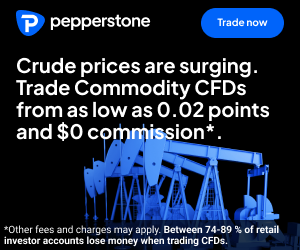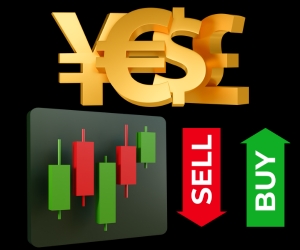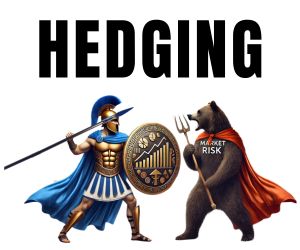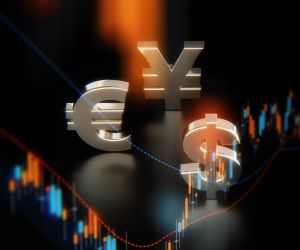PUT-CALL PARITY AND ITS APPLICATION IN FOREX
Put-call parity is a key principle in options pricing that defines the relationship between the value of call and put options with the same strike price and expiry. In Forex markets, it provides a framework for spotting mispricing and ensuring consistency between option premiums and the underlying currency pair. For traders, understanding put-call parity is essential to grasping how FX options are valued and how arbitrage opportunities may arise when the balance is broken.

Put-Call Parity Defined
Put-call parity is one of the cornerstones of modern options theory. It establishes a precise relationship between the prices of call and put options with the same strike price and expiry, ensuring that no arbitrage opportunities exist. At its heart, put-call parity is not just a formula; it is a logical framework showing that two different portfolios — one consisting of a call option and cash, the other of a put option and the underlying asset — must be worth the same in an efficient market. If they are not, traders can exploit the difference for a riskless profit, and prices will quickly adjust.
The Basic Equation
The standard put-call parity formula is expressed as:
C + PV(K) = P + S
Where:
- C = price of a European call option
- P = price of a European put option
- S = spot price of the underlying asset (in Forex, the currency pair)
- PV(K) = present value of the strike price, discounted at the risk-free rate
This formula states that the cost of holding a call option plus cash equal to the discounted strike price should equal the cost of holding a put option plus the underlying asset. If this balance does not hold, arbitrageurs can step in to buy the undervalued side and sell the overvalued side, locking in risk-free profits until the relationship is restored.
The Logic Behind Parity
Why does put-call parity exist? It reflects the fact that markets should not allow two identical positions to trade at different prices. Consider two scenarios:
- Portfolio A: Buy a call option and enough risk-free bonds to cover the strike price at expiration.
- Portfolio B: Buy a put option and the underlying currency pair itself.
At expiry, both portfolios produce the same payoff, regardless of whether the underlying rises above or falls below the strike. Therefore, today they must be priced the same. If Portfolio A is cheaper, traders will buy it and sell Portfolio B, capturing an arbitrage. This pressure will bring prices back into alignment.
European vs. American Options
It is important to note that the formula strictly applies to European-style options, which can only be exercised at expiry. American options, which allow early exercise, introduce additional complexities because dividends, interest rates, or carry costs can shift the balance. In the Forex world, most options are structured in a way that put-call parity holds closely, but traders must always be mindful of contract specifications.
Application in Forex Markets
In equities, the underlying asset is a share; in Forex, it is a currency pair. That difference changes the way put-call parity is interpreted. Because currencies trade in pairs, the “spot price” is the exchange rate itself. The risk-free rate is not a single rate but rather the difference between the interest rates of the two currencies in the pair. This distinction is crucial. For example, when valuing an option on EUR/USD, the present value of the strike must be adjusted for the euro interest rate, while the dollar serves as the numeraire. This makes put-call parity in Forex a bit more nuanced than in other markets.
Arbitrage Examples
To see put-call parity in action, consider the following scenario. Suppose the spot price of EUR/USD is 1.1000. A European call option with a strike of 1.1000 expiring in three months costs $0.0150, while the corresponding put costs $0.0100. Assume the risk-free rate is near zero, so discounting the strike has little effect.
According to parity:
C + PV(K) = P + S
0.0150 + 1.1000 = 0.0100 + 1.1000
Here, the equality nearly holds, but if the call had been priced at 0.0200 instead, there would be an imbalance. Traders could sell the overpriced call, buy the put, and hold the spot, capturing a no-risk arbitrage. In practice, such opportunities are quickly eliminated as professional desks constantly monitor these relationships.
Why It Matters
Put-call parity is more than an academic exercise. It underpins the pricing models used by banks, hedge funds, and options traders in the FX space. By ensuring that calls and puts remain fairly aligned, it creates confidence in the integrity of the options market. For traders, it provides a tool for spotting mispricings and understanding when option premiums make sense given the current exchange rate and interest rate differential. Even if one never intends to trade options directly, knowing put-call parity helps interpret flows and expectations in the broader market.
Limits and Real-World Frictions
In reality, the clean formula is affected by transaction costs, bid-ask spreads, and liquidity. A theoretical arbitrage may exist, but once trading costs are considered, the profit disappears. Furthermore, capital requirements, credit risk, and differences in settlement conventions across currencies can create small deviations. These frictions mean that parity holds as a guideline rather than a perfect rule. Still, the principle is robust enough that large divergences are rare and fleeting.
Historical Perspective
The origins of put-call parity trace back to early work in financial economics during the 1960s and 1970s. It formed a key stepping stone toward the Black-Scholes option pricing model, which revolutionised derivatives markets. While the math can appear abstract, the principle remains elegantly simple: if two portfolios produce the same outcome, they must cost the same today. This intuitive idea continues to guide not only options pricing but the mindset of traders who seek out and exploit inefficiencies wherever they appear.
Takeaway for Traders
For Forex traders stepping into the world of options, put-call parity is the first concept to master. It is the foundation for understanding how calls, puts, and the spot market interact. Without it, more advanced strategies such as straddles, strangles, or risk reversals cannot be properly understood. Even for those sticking to spot trading, awareness of parity sharpens one’s grasp of market mechanics and the invisible forces keeping currency derivatives in balance.
Option Pricing
Understanding put-call parity is only the first step. To truly apply it in Forex, traders need to grasp how options are priced in the first place. Options are not valued in isolation; their premiums reflect a blend of market factors including the underlying exchange rate, time to expiry, volatility expectations, and the interest rate differential between the two currencies in the pair. Pricing models, such as Black-Scholes and its adaptations for currency options, provide a framework, but the intuition behind them is just as important for practical trading.
Intrinsic Value and Time Value
An option’s price, or premium, consists of two main components: intrinsic value and time value. Intrinsic value is straightforward — it represents the immediate value if the option were exercised right now. For a call option, it is the difference between the spot rate and the strike price, if positive. For a put, it is the strike minus the spot, if positive. If exercising the option would not be profitable, the intrinsic value is zero.
Time value is more nuanced. It reflects the possibility that the option could become profitable before it expires. Even an option that is out-of-the-money can carry significant time value if there is enough volatility or time remaining. In Forex, where currency pairs can move sharply within hours, time value can be a major portion of an option’s price.
Volatility’s Role
Volatility is one of the most critical inputs into option pricing. Higher expected volatility increases the chance that an option will end up in-the-money, boosting its premium. This is why implied volatility, derived from option prices themselves, is closely watched by traders as a gauge of market expectations. A spike in implied volatility often signals rising uncertainty, whether from upcoming economic data, central bank announcements, or geopolitical risks.
For example, ahead of a closely watched U.S. Federal Reserve meeting, implied volatility in USD pairs often jumps, making both calls and puts more expensive. Traders must weigh whether these higher premiums justify the potential payoff, or whether it is better to wait until after the event when volatility subsides.
Interest Rate Differentials
Unlike equities, where dividends affect option pricing, currency options are shaped by interest rate differentials. Each currency carries an implied yield, and the gap between them determines the “cost of carry.” In pricing models, this carry influences whether call or put options are more expensive. For example, if U.S. rates are higher than eurozone rates, USD calls (and EUR puts) tend to be cheaper than USD puts (and EUR calls), reflecting the advantage of holding the higher-yielding currency.
This dynamic means that option pricing in Forex is intimately linked to monetary policy. Shifts in rate expectations can ripple through the options market, altering premiums and reshaping demand.
The Black-Scholes Framework in Forex
The Black-Scholes model, developed in the 1970s, revolutionised options pricing by providing a mathematical formula for valuing European options. For Forex, the model was adapted to include two interest rates — one for each currency in the pair. The key inputs are the spot exchange rate, strike price, time to expiry, volatility, and interest rate differential. While the formula can appear intimidating, its output essentially reflects the market’s consensus of what an option should be worth under given assumptions.
Professional traders rarely calculate Black-Scholes by hand today; platforms and trading systems perform the math instantly. What matters for traders is understanding how changes in inputs affect option prices. For instance, if implied volatility rises, both calls and puts become more expensive. If the spot exchange rate moves closer to the strike, the option’s intrinsic value shifts accordingly. This intuitive grasp is crucial for decision-making.
The Greeks: Sensitivity Measures
To navigate option pricing effectively, traders often turn to the “Greeks,” which measure how an option’s price responds to changes in various factors:
- Delta: Measures how much the option’s price changes with a move in the underlying spot rate.
- Gamma: Shows how delta itself changes as the underlying moves, indicating convexity.
- Theta: Captures the impact of time decay on option value.
- Vega: Reflects sensitivity to changes in implied volatility.
- Rho: Measures sensitivity to changes in interest rates.
In Forex, delta is especially important because it reflects directional exposure to a currency pair, while vega highlights how options become more valuable when uncertainty grows. Traders who ignore the Greeks risk being blindsided by shifts in time decay or volatility, even if the underlying spot behaves as expected.
Implied vs. Realised Volatility
Another key concept is the distinction between implied and realised volatility. Implied volatility is forward-looking, reflecting market expectations embedded in option premiums. Realised volatility is backward-looking, measuring how much the currency pair has actually moved in the past. When implied volatility trades far above realised, options may be overpriced, creating opportunities for traders to sell volatility. Conversely, when implied is low but realised volatility is high, options may offer cheap protection or speculative upside.
Arbitrage and Mispricing
Put-call parity helps ensure consistency, but mispricings do occur, particularly in less liquid markets or during periods of stress. For example, if call options are trading too cheaply relative to puts, traders may build synthetic positions to capture the discrepancy. These arbitrage opportunities tend to be short-lived, as sophisticated desks monitor them constantly, but they underscore how option pricing is rooted in logic and balance rather than guesswork.
Practical Example
Suppose USD/JPY is trading at 140. A one-month at-the-money call and put both have premiums around 1.50 yen. Now imagine implied volatility suddenly spikes due to an unexpected Bank of Japan policy announcement. Both options might jump to 2.50 yen, even if the spot has barely moved. The higher premium reflects the greater uncertainty, not a change in intrinsic value. Traders who understand this dynamic can decide whether to sell options to capture inflated premiums or buy them to speculate on bigger moves.
Why Pricing Matters for Spot Traders
Even if a trader never buys or sells an option, understanding option pricing has value. The flows in the options market influence spot FX. For instance, large option expiries at certain strike prices can act as magnets, pulling spot rates toward those levels as expiry approaches. Traders aware of these dynamics can better anticipate short-term movements in currency pairs.
Moreover, option pricing reflects collective market expectations of risk. If implied volatility is rising across multiple pairs, it signals that traders are bracing for turbulence. Spot traders can use this information to adjust position sizes or tighten stops, even without touching an option contract.
The Discipline of Options Thinking
Ultimately, learning how options are priced cultivates discipline. Options force traders to think in probabilities, not certainties. A call with 30 days to expiry and a 30% chance of finishing in-the-money is priced accordingly, reflecting that risk-reward balance. Spot traders who adopt this mindset may become more measured in their approach, recognising that every trade carries probabilities rather than guarantees.
Option pricing, therefore, is not just about valuing derivatives. It provides a lens through which to view the entire Forex market, highlighting how volatility, rates, and expectations interact. With put-call parity as the anchor, traders gain a structured way to understand value, avoid mispricings, and make more informed decisions in the world’s largest financial arena.
FX Applications
Put-call parity may look like an abstract equation, but its real power lies in practical applications within Forex markets. By linking the prices of puts, calls, and spot exchange rates, the principle acts as a constant check on the integrity of FX option pricing. For traders, it provides insights that extend beyond options desks, shaping how risk is managed, how strategies are built, and how currency flows are interpreted. This section explores the main ways put-call parity applies to FX trading, from arbitrage detection to hedging and market sentiment analysis.
Arbitrage Opportunities
One of the clearest uses of put-call parity in FX is spotting arbitrage opportunities. If the relationship between calls, puts, and the underlying spot deviates, traders can construct “synthetic” positions to exploit the imbalance. For example, suppose a call option on EUR/USD is trading at a higher premium than justified by parity. In that case, a trader could sell the overpriced call, buy the equivalent put, and hold the spot currency, locking in a riskless profit once costs are accounted for.
In practice, these mispricings are rare and short-lived. Professional desks with sophisticated models and lightning-fast execution monitor parity conditions constantly. Still, the principle gives all traders — even retail participants — a framework to evaluate whether options markets are aligned or distorted. Understanding parity ensures traders don’t fall victim to overpriced contracts or misleading signals.
Synthetic Positions
Put-call parity allows traders to replicate one instrument with another, creating synthetic positions. For instance, a call option can be replicated by holding a put, the underlying currency pair, and adjusting for the strike’s present value. This flexibility is particularly valuable in FX markets, where liquidity varies across instruments. If call options are illiquid or expensive, a trader can create an equivalent exposure using puts and spot positions, thanks to parity.
Synthetic strategies are also used to manage risk. A trader might replace a spot position with an option-based synthetic to cap downside while retaining upside exposure. This blending of instruments illustrates how parity provides the mathematical backbone for flexible portfolio construction.
Hedging Currency Risk
For corporates, fund managers, or anyone exposed to international transactions, put-call parity underpins hedging strategies. A company expecting dollar-denominated revenues can use parity to assess whether buying a put option or constructing a synthetic hedge offers better value. By comparing costs, managers can decide the most efficient way to lock in exchange rates and protect against adverse moves.
Parity ensures consistency in pricing, so hedgers can evaluate options without fear that one side of the market is systematically mispriced. This gives businesses confidence that the hedge they choose reflects fair market value rather than a distortion.
Reading Market Sentiment
Beyond arbitrage and hedging, put-call parity has a subtler role: it reveals how traders are positioning around key currency pairs. When demand for calls surges, raising their premiums relative to puts, it suggests the market is leaning bullish. Conversely, heavy demand for puts can signal bearish expectations. These shifts, when viewed against parity, offer clues about sentiment and potential market direction.
For example, in the run-up to a major U.S. jobs report, traders may rush to buy USD calls as protection against a stronger dollar. If premiums diverge from parity-adjusted expectations, it may indicate fear of a sharp move. Spot traders can use this information even without trading options directly, aligning their positions with broader market sentiment.
FX-Specific Adjustments
In currency markets, parity takes on unique features because of interest rate differentials. The formula must account for the yields of both currencies in the pair. This means that forward rates, derived from interest rate gaps, are integral to ensuring parity holds. A call on EUR/USD, for example, implicitly includes not just the exchange rate but also the interest rate difference between euros and dollars.
For traders, this highlights why FX options are not just about volatility but also about rates. Shifts in central bank policy can ripple through parity conditions, altering the relative pricing of calls and puts. A trader ignoring this connection risks misinterpreting signals or overpaying for protection.
Case Study: The Swiss Franc Shock
The January 2015 Swiss franc shock is a stark reminder of why parity and fair pricing matter. When the Swiss National Bank suddenly removed its currency peg, EUR/CHF collapsed by nearly 30% in minutes. In the aftermath, options markets were thrown into chaos, with calls and puts temporarily misaligned. Traders who understood parity were better equipped to evaluate which contracts were fairly priced and which were distorted by panic. For some, this knowledge provided opportunities; for others, it was a lifeline that prevented costly mistakes.
Practical Tips for Traders
Applying put-call parity in Forex doesn’t require advanced math — it requires awareness. Here are a few practical steps traders can use:
- Regularly compare option premiums with parity expectations to spot distortions.
- Use synthetic positions when liquidity is limited in one side of the market.
- Watch option flows as a sentiment gauge, particularly around major economic events.
- Incorporate interest rate differentials into all parity calculations, since they are central to FX pricing.
These habits ensure that parity becomes part of a trader’s toolkit, not as a rigid formula, but as a lens through which to view the market.
Why It Matters for Spot Traders
Even if a trader never touches an option contract, parity still matters. Large option expiries can act like gravitational forces on spot rates. If billions of euros’ worth of EUR/USD options are set to expire at 1.1000, the pair often gravitates toward that level as dealers hedge their exposure. This phenomenon, known as “pinning,” is directly linked to option pricing and parity. Spot traders who ignore it may be blindsided by sudden moves toward strike prices around expiry dates.
Enduring Relevance
Put-call parity has been around for decades, but its relevance endures in modern Forex markets. As electronic trading accelerates and derivatives markets expand, the principle remains a quiet anchor ensuring order amid the chaos. For traders, mastering it is less about memorising an equation and more about developing an instinct for balance. When options prices look out of sync, parity provides the benchmark against which reality is tested.
In the end, put-call parity is a reminder that financial markets, for all their complexity, are governed by simple rules of logic and equivalence. Those who understand these rules gain not just a pricing tool, but a sharper lens on how currencies trade, how risks are hedged, and how opportunities emerge in the ever-changing landscape of Forex.








